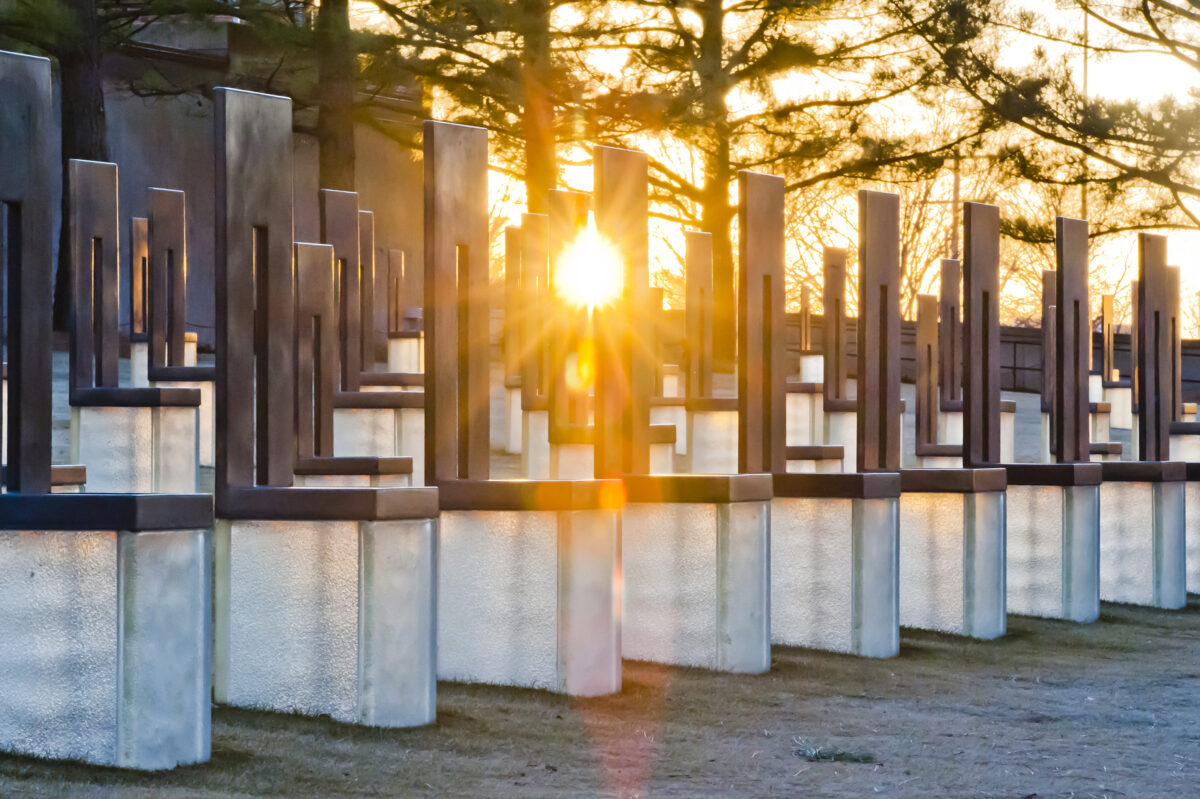A community and nation came together.
On April 19, 1995, an unspeakable act of domestic terrorism occurred at the Alfred P. Murrah Federal Building in Oklahoma City killing 168 people and changing the nation forever. The hope and resilience shown by those who lived through it proved that good can triumph over evil.
Within months, a 350-member task force comprised of family members, survivors, first responders and others from the community came together to ensure those who were killed, those who survived and those changed forever would never be forgotten.
On this Sacred Ground we can find Common Ground through educational experiences. Use the resources below to help teach this story to students today. You’ll find videos and interactive content for the classroom – then bring your students to the Memorial Museum to fully understand the impact of violence.
Overview Video
This 10-minute video is a short overview to help teach the story of the Oklahoma City bombing. Through family and friends of those who were killed, those who survived and those changed forever, you will witness the strength and resilience of those impacted.
Virtual Hope Trunk
Over the years, tens of thousands of items have been left on the Memorial site or donated to Archives to ensure those who were killed are never forgotten. In this trunk, experience a sampling of items that loved ones or strangers left and the significance of each one. Click here to learn stories of all of the 168 that were killed.
First Person: Stories of Hope
Experience history firsthand and how lives were changed forever on April 19, 1995. Hear powerful stories from Family Members, a Survivor and First Responder and their remarkable journeys of hope and resilience. They will challenge you to live your lives more meaningfully to make a positive impact in this world.
Click to view each story
Michael D. Weaver, husband and father to Donna and Tim, worked as an attorney in the Legal Division at the U.S. Department of Housing and Urban Development in the Alfred P. Murrah Federal Building. He was one of the 168 individuals that was killed on April 19, 1995.
Arlene was working as an Army Personnel Sergeant in the Army Recruiting Battalion housed on the 4th Floor in the Alfred P. Murrah Federal Building when a bomb exploded at 9:02am on April 19, 1995.
Richard Kelley was an off-duty firefighter and responded as a paramedic when the bomb exploded in downtown Oklahoma City. He is now the chief of the Oklahoma City Fire Department.
Lesson Plans
One-hundred and sixty-eight. It isn’t just a number. It represents mothers, fathers, sisters, brothers, grandparents, children… lives that were needlessly taken on April 19, 1995. It’s important to remember that everyone killed in the Oklahoma City bombing were unique individuals and should never be forgotten.
Below are lessons that will help you learn more about those who were killed and how the creation of the Oklahoma City National Memorial & Museum keeps their stories alive.
- Honor: Remembering Those Who Were Killed
On April 19, 1995, 168 people were killed in the bombing of the Alfred P. Murrah Federal Building in Oklahoma City. As time goes by, people often reference this number as a statistic, grouping all the victims together as one. It is important to remember each victim is an individual, a unique and significant member of a family or friendship, rather than just a number. - Remembrance: The Process of Memorialization
For hundreds of years, Americans have honored those who have died in wars and other tragic events through the construction of memorials. These tributes offer places to grieve and become places of remembrance, comfort, and reflection. They can also provide the feeling of connectedness to those who were lost. It is because of the public’s commitment to ensure we never forget those who were killed, those who survived and those changed forever, that the Oklahoma City National Memorial & Museum was created. - The Oklahoma Standard
What does it mean to be a good citizen? What do Service, Honor, and Kindness really mean? How can we best exemplify the Oklahoma Standard in our daily lives? This lesson plan aims to answer these questions.




